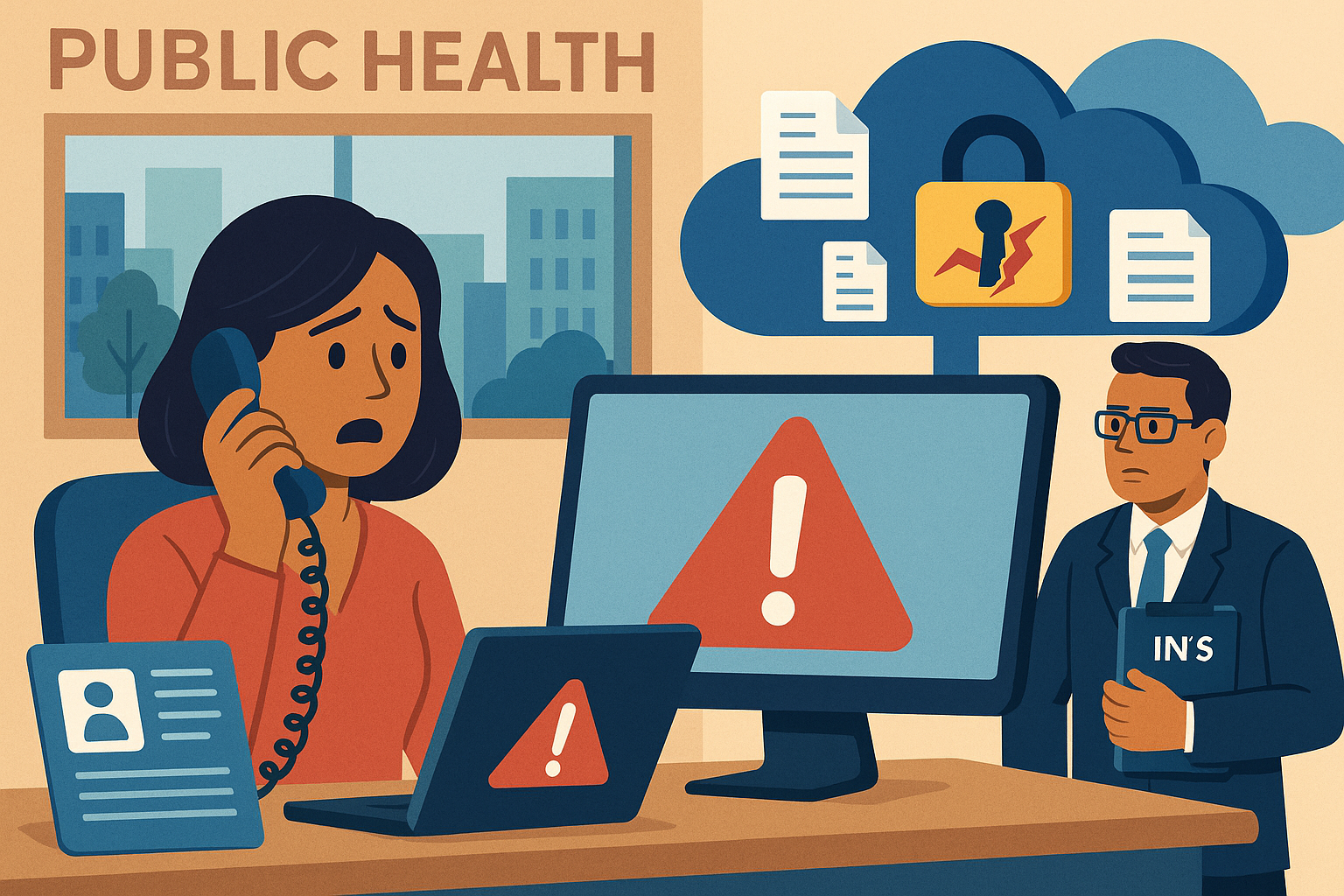Regional Public Health Unit Launches Incident Response After Personal Information Compromised via Cloud Migration
The Challenge
In late autumn, a mid-sized Regional Public Health Unit (RPHU) in Ontario began migrating its outdated case management system to a new cloud-based platform designed to improve efficiency in contact tracing and community health reporting. The migration, planned over six months, involved transferring thousands of electronic health records containing sensitive personal identifiers such as names, addresses, health numbers, vaccination status, and case histories.
The project was managed internally, with partial assistance from a third-party cloud vendor providing infrastructure-as-a-service. During the final migration phase, an administrator noticed several error logs indicating failed data transfers. These anomalies were dismissed as common synchronization issues and not investigated further.
Two weeks later, an analyst from the provincial Ministry of Health alerted RPHU officials that several patient records from the region had surfaced on a public file-sharing website. This discovery prompted an immediate internal review and activation of the unit’s incident response protocol.
Investigators determined that the compromised data originated from a temporary cloud storage container used during the migration. The container, which should have been restricted, had been mistakenly configured with public access permissions for approximately 48 hours. During that window, automated bots crawled and indexed the exposed files.
The incident affected approximately 8,000 individuals, including children and seniors receiving ongoing care. The exposed data included full names, birth dates, and vaccination histories, enough to constitute a significant privacy breach under PIPEDA. Although there was no evidence of direct misuse, the risk of identity theft and reputational harm was considerable.
Internally, the event caused frustration and confusion. Employees questioned why proper testing had not been performed before the migration and why no Data Protection Impact Assessment (DPIA) had been completed. Several staff members expressed concerns that management had prioritized cost savings and deadlines over privacy compliance.
Media outlets quickly reported the story after local residents received breach notifications. Headlines criticized the agency for “negligent cloud adoption” and “putting public trust at risk.” The Office of the Privacy Commissioner of Canada (OPC) announced that it would review the incident to determine whether adequate safeguards were implemented prior to the breach.
As the response continued, the regional board faced growing pressure from both the public and the provincial health ministry. The breach revealed a common challenge in public administration: balancing modernization with compliance. Even well-intentioned digital transformation projects can expose procedural weaknesses when privacy governance is overlooked.
By the end of the initial investigation, RPHU leadership recognized that restoring public trust would take far longer than migrating a database.
Our Solution
Service Area: Privacy and Data Protection (supported by Governance and Incident Response)
A multidisciplinary advisory team was engaged to manage the containment, assessment, and recovery processes under PIPEDA and applicable Ontario privacy legislation, including PHIPA and MFIPPA.
Key elements of the engagement included:
1. Emergency Containment and Forensics: Secured all cloud storage, rotated access keys, preserved evidence, and documented configurations.
2. Breach Assessment and Reporting: Conducted a real risk of significant harm (RRoSH) analysis, prepared regulator notifications, and developed individual notification templates.
3. Cloud Security Hardening: Implemented encryption, least-privilege access, private networking, and automated configuration guardrails.
4. Third-Party Coordination: Enforced contractual breach clauses, obtained vendor attestations, and verified remediation activities.
5. Privacy Governance Uplift: Completed a full DPIA for the migration workflow, updated data inventories, and ensured compliance record-keeping.
6. Capacity Building: Provided targeted training for IT administrators and communications support for leadership teams.
The Value
The engagement delivered measurable improvements in both security posture and regulatory readiness: These outcomes positioned the RPHU to demonstrate accountability, strengthen resilience, and rebuild community trust.
- Rapid containment: Public exposure was eliminated within hours of the response activation.
- Regulatory compliance: All breach documentation and notifications were completed in alignment with PIPEDA and PHIPA requirements.
- Enhanced security:
- 100% of cloud storage containers were evaluated and hardened.
- Misconfigured access permissions were reduced by more than 90%.
- Centralized logging coverage increased to over 95% of cloud resources.
- Improved governance: A DPIA-driven change process was implemented to ensure privacy is embedded in all future IT projects.
- Stronger communications: Clear and transparent messaging reduced misinformation and improved stakeholder confidence.
Implementation Roadmap
Phase 0 — Mobilization (Days 0–1)
– Convene an incident response team and define key roles (forensics, legal, communications).
– Isolate affected systems, rotate credentials, and disable public endpoints.
– Collect logs and system snapshots for investigation.
Phase 1 — Containment and Assessment (Days 1–3)
– Conduct an RRoSH assessment and prepare regulator and individual notifications.
– Confirm data residency compliance and review vendor accountability.
– Gather attestations and technical evidence from the cloud provider and system integrator.
Phase 2 — Stabilization (Weeks 1–2)
– Apply encryption policies, implement least-privilege access, and automate configuration compliance checks.
– Integrate alerting for new public object creation and abnormal access activity.
– Complete a DPIA for the migration and update retention policies.
Phase 3 — Institutionalization (Weeks 3–6)
– Finalize breach records to meet PIPEDA’s 24-month retention requirement.
– Implement a secure migration checklist and formal change advisory approval process.
– Deliver privacy and security training sessions to all project and technical staff.
Phase 4 — Optimization (Weeks 6–12)
– Validate control effectiveness through automated scans and manual testing.
– Establish key performance metrics: misconfiguration rate, time to containment, and notification turnaround.
– Present a final executive report with recommendations and updated governance documentation.


